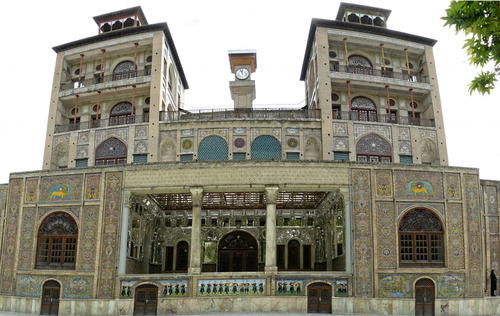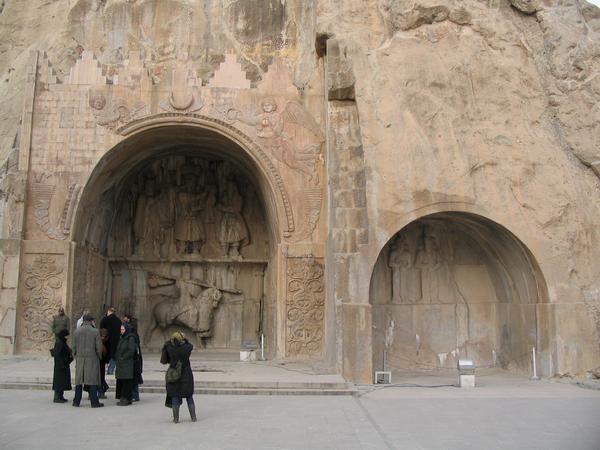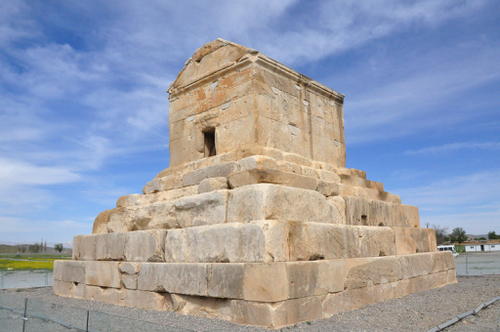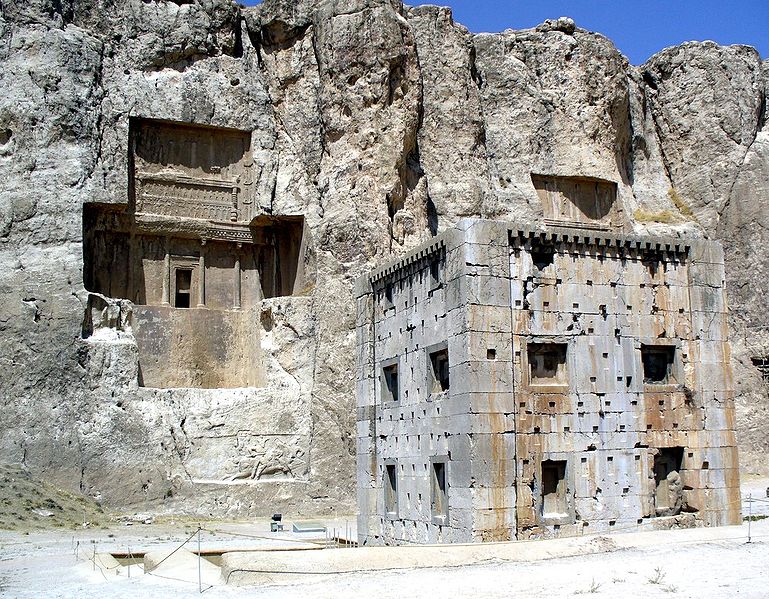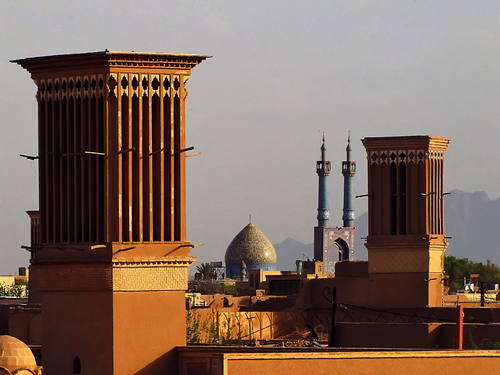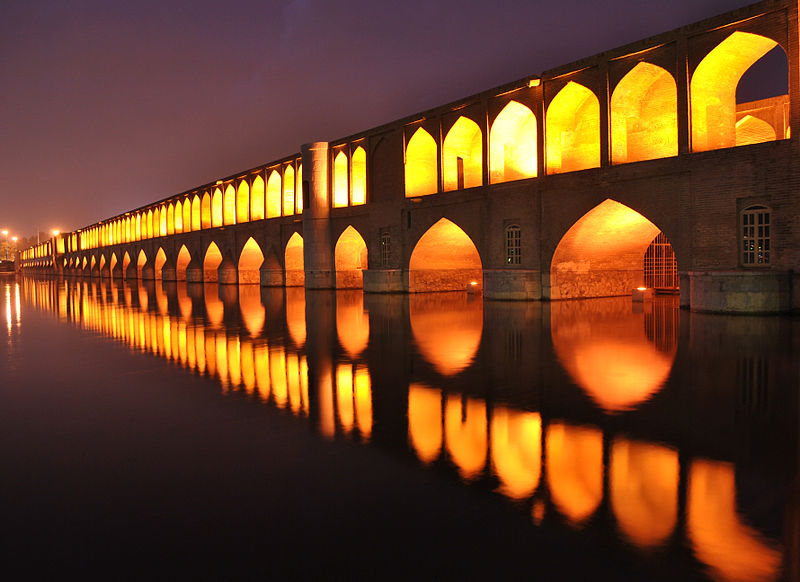The Comprehensive Tour
16 days and 15 nights,
including 10 UNESCO World Heritage sites
This tour begins and ends in Tehran. You’ll get to see a beautiful country — Iran is an ancient civilization. You can visit 10 UNESCO World Heritage sites on this tour, and you can customize any tour.
Itinerary Highlights of the Comprehensive Tour
- Day 1— Arrive in Tehran: acclimate, relax and some sightseeing (overnight in Tehran)
- Day 2— Tehran for the Golestan Palace and museums (overnight in Tehran)
- Day 3— Tehran to Zanjan for the Soltaniyeh Dome and the Katalekhor Cave (overnight in Zanjan)
- Day 4— Zanjan to Hamadan for Takht-e Soleiman and Esther’s Tomb (overnight in Hamadan)
- Day 5— Hamadan to Kermanshah, including the Taq-e Bostan Complex(overnight in Kermanshah)
- Day 6— Kermanshah to Bisotun for Falak-ol-Aflak Castle and Gerdab-e-Sangi, and on to Khorramabad (overnight in Khorramabad)
- Day 7— Khorramabad to Susa for Tomb of Daniel, Choqa Zanbil Ziggurat and Shushtar, and on to Ahwaz (overnight in Ahwaz)
- Day 8— Ahwaz to Shiraz, and a day of rest (overnight in Shiraz)
- Day 9— Excursion to Persepolis, Pasargadae and Naghsh-e-Rostam (overnight in Shiraz)
- Day 10— Tour Shiraz, visit Karim Khan and Eram Gardens. (overnight in Shiraz)
- Day 11— Shiraz to Yazd. (overnight in Yazd)
- Day 12– Tour Yazd for Jameh Mosque and Towers of Silence (overnight in Yazd)
- Day 13— Yazd to Na’in and on to Isfahan (overnight in Isfahan)
- Day 14— Tour Isfahan, Masjed-e Jameh and Vank Cathedral (overnight in Isfahan)
- Day 15— Tour Isfahan, Meidan Emam and Grand Bazaar (overnight in Isfahan)
- Day 16— Isfahan to Abyaneh and Kashan and on to Tehran for your departure
Detailed Itinerary of the Comprehensive Tour
Day 1: Landing in Tehran
Arrive in Tehran (IKA Airport ). After passing through customs and claiming your baggage, you’ll see your guide, holding a sign with your name on it, waiting for you outside the baggage area.
He or she will be your guide for the whole trip. Your driver will be waiting for you outside. Your hotel is around 40 minutes away. Get a good night’s sleep at the 5-star Espinas Hotel.
Day 2: Touring Tehran
After you enjoy a great buffet breakfast and leave the hotel, you and the guide can decide how you want to spend your time in Tehran.
There are many museums and places of interest, but obviously, you will have to pick and choose which are of the most interest to you. You won’t come close to seeing them all. Tehran is a huge city, with a population of around 12 million people.
The Alborz Mountains, snow-capped most of the year, rise just outside the city in the north. Traffic in Tehran is heavy and chaotic. The foothills of the Alborz have a number of beautiful restaurants and you might want to tour that area and have dinner there. There is also a cable car that you can take most of the year, offering some very scenic views.
Among the sites that can be visited in Tehran are the Golestan Palace, a UNESCO World Heritage site, a complex of 17 palaces built during the Qajar Dynasty in the 18th and 19th Centuries.
The Archaeological Museum: A must-see in Tehran. Collection includes: pottery, ceramics, stone figures and carvings from 5th & 4th millennium BC. Four tablets inscribed in cuneiform, Darius I inscription, carved staircase, tiles from Apadana Palace, and salt man are some of the highlights.
The Carpet Museum: Founded in 1976, exhibits a variety of Persian carpets from all over Iran, dating from the 18th century to present.
The National Jewels Museum: The treasury of Iranian national royal jewels accommodates the world’s most precious jewelry collection. The treasury has an interesting history, going back centuries.
The Glassware and Ceramic Museum (Abgineh): The premises have been turned into a museum where glass and clay works are on display and were built about 90 years ago. The building is a combination of the traditional Iranian style and the European architecture of the 19th century.
The collection of glass and clay works that are on display at the museum is among the rarest in Iran and it includes clay pots dating back the 4th millennium BC up to the present time as well as glass works from the 1st millennium BC up to the contemporary era. European glass works from the 18th and 19th centuries are also part of the collection.
You might also decide to visit a large student art center, where art students exhibit their work and you might have the opportunity of meeting some of them.
Overnight at 5-star Espinas Hotel.
Day 3: Tehran — Zanjan
In the morning drive to Zanjan (Tehran–Zanjan: 319 km). Once you are clear of the Tehran traffic, almost all of your itinerary will be on 4- or 6-lane divided highways. On the way to Zanjan, make a stop in the small city of Soltaniyeh, just off the highway.
There you can see the Soltaniyeh Dome, erected by the Mongol rulers of Persia in the early 14th Century. It is the largest brick dome in the world and the third largest dome all told, after the domes of the Florence Cathedral and the Hagia Sophia. Stairs lead up to the top of the Dome. The climb to the top offers a bit of exercise and is not obligatory.
You can also stop, en route, at the Katalekhor Cave. The name, Katalekhor, means “Mount of Sun.” Geological studies in 1984 show that the cave formation dates back to the Jurassic period.
Overnight at the 4-star Grand hotel in Zanjan.
Day 4 Zanjan — Hamadan (429 km)
After driving 140 km from Zanjan, stop to visit the Takht-e Soleiman. This is another UNESCO World Heritage site, and a very impressive one. The archaeological site of Takht-e Soleyman is situated in a valley set in a volcanic mountain region.
The site includes the principal Zoroastrian sanctuary partly rebuilt in the Ilkhanid (Mongol) period in the 13th century as well as a temple of the Sasanian period (6th and 7th centuries) dedicated to Anahita.
The site has important symbolic significance. The designs of the fire temple, the palace and the general layout have strongly influenced the development of Islamic architecture. There are still around 150,000 Zoroastrians living in Iran and every October they hold an important ceremony at Takht-e Soleyman.
Leaving Takht-e Soleyman, the route continues on to the ancient city of Hamadan. After checking into your hotel, visit the tomb of Esther and her uncle Mordechai.
According to the Old Testament, Esther was the wife of Xerxes (the Biblical King Ahasuerus) who saved the Jews from the evil Haman.
If you happen to think of it, the Rabbi/custodian of the tomb is a great collector of foreign fountain pens and appreciates any addition to his collection.
You can also visit Hegmataneh Hill, where there are recent excavations from the ancient Median and Achaemenid dynasties. Also around Hamadan, in the mountains above the city, is Ganjnameh, the site of ancient cuneiform rock carvings, dating from the time of King Xerxes in the 5th Century BC.
Overnight at 4-star Hotel Bouali.
Day 5: Hamadan — Kermanshah
In the morning, you still have time to visit any sites in Hamadan that you might not have
covered the day before. Then drive to Kermanshah, 190 km away.
The major attraction in Kermanshah is the Taq-e Bostan a series of large rock bas-reliefs dating from the Sassanid Empire of Persia, the Iranian dynasty which ruled western Asia from 226 to 650 AD.
It is located in the heart of the Zagros Mountains, where it has withstood almost 1,700 years of wind and rain.
Overnight in Kermanshah at 4-star Jamshid Hotel.
Day 6: Kermanshah — Khorramabad
After breakfast, set out for Khorammabad, 320 km away. On the way, 35 km south of Kermanshah, visit another UNESCO World Heritage site: Bisotun, a series of bas-relief carvings set into cliffs.
They were commissioned by Darius the Great in the 6th century BC. The inscriptions are in three languages and depict Darius receiving chained supplicants.
The highlight of your visit to Khorramabad is Falak-ol-Aflak Castle, situated on the top of a large hill overlooking the city. This gigantic structure has eight towers and offers great views of the city below.
Falak-ol-Aflak Castle is among the most important remaining architectural monuments built during the Sassanid era and was built over 1800 years ago.
Khorramabad is also the site of the Gerdab-e-Sangi, a 1600-year-old Sassanian stone reservoir, l8 m in diameter, said to be the world’s oldest.
Overnight at the 3-star Shahrdari Hotel.
Day 7: Khorramabad — Susa — Shushtar — Ahwaz
In the morning, set out for Shush (Susa) 290 km away. Shush (Susa or Biblical Sushun) dates from 400 BC and was a strategic Elamite city and a regional capital of the Achaemenid Empire. The city was gradually abandoned during the Mongol invasions.
At the entrance to Shush is the Chateau de Morgan, a fortress built to defend French archeologists working on the site at the turn of the twentieth century.
The ruins of the ancient citadel include a bare one-foot-high wall of the Palace of Darius dating from 521 BC and two huge stones from the base of the royal apadana (reception hall).
Another attraction in Shush is the Tomb of Daniel, the supposed final remains of the biblical Daniel, an official in the service of King Darius (522–486 BC).
Ancient Shush, known as Susa, was also the birthplace of Esther — the biblical savior of the Jews in the time of their captivity in 6th century BC. The town prospered as a Jewish pilgrimage site for over a thousand years throughout the first millennium until the arrival of the Mongols in the thirteenth century.
Leaving Shush, we head for the Choqa Zanbil Ziggurat, another UNESCO World Heritage site, 45 km away.
An ancient Elamite complex built about 1250 BC, and one of the few existent ziggurats outside of Mesopotamia, it became the first Iranian site to be inscribed on the UNESCO World Heritage List.
Archaeological excavations undertaken between 1951 and 1962 revealed the site again, and the ziggurat is considered to be the best preserved example in the world.
Before arriving in Ahwaz there is one more UNESCO World Heritage Site to visit — the Shustar Hydrolic System. This masterpiece of creative genius can be traced back to Darius the Great in the 5th century BC.
It involved the creation of two main diversion canals on the river Karun one of which, the Gargar canal, is still in use providing water to the city of Shushtar via a series of tunnels that supply water to mills. It forms a spectacular cliff from which water cascades into a downstream basin.
The property has an ensemble of remarkable sites including the Salisel. Castel, the operation centre of the entire hydraulic system, the tower where the water level is measured, damns, bridges, basins and mills.
It bears witness to the know-how of the Elamites and Mesopotamians as well as more recent Nabatean expertise and Roman building influence.
After the visit to Shustar, overnight in Ahwaz at the 4-star Pars hotel.
Day 8: Ahwaz — Shiraz
Drive to Shiraz (539 km). Overnight Shiraz at either the 5-star Chamran hotel or the 5-star Shiraz Hotel .
Shiraz will be your base for visiting three famous historical sites nearby: Persepolis, Pasargadae and Naghsh-e-Rostam. All three of these sites are within easy driving distance of Shiraz and the day-long tour to explore them will be the major activity for tomorrow (Day 9) so rest well.
Day 9: Shiraz — Excursion to Persepolis
Today we will be visiting 3 world famous UNESCO World Heritage sites: Persepolis, Pasargadae and Naghsh-e-Rostam.
Persepolis is probably the most famous single historical site in Iran and a UNESCO World Heritage site as well.
When it was founded by Darius III in 518 BC, Persepolis was the capital of the Achaemenid Empire, where the king of kings created an impressive palace complex inspired by Mesopotamian models. The importance and quality of the monumental ruins make it a unique archaeological site.
Persepolis was the example par excellence of the dynastic city, the symbol of the Achaemenid dynasty, which is why it was burned by the Greeks of Alexander the Great in 330. According to Plutarch, they carried away its treasures on 20,000 mules and 5,000 camels. What remains today, dominating the city, is the immense stone terrace (530 m by 330 m), half natural, half artificial, backed against the mountains.
As in Mesopotamia, the principal building material was sun-dried brick; much of which, has happily survived the vicissitudes of time.
Pasargadae was the first dynastic capital of the Achaemenid Empire, founded by Cyrus II the Great in the 6th century BC.
Its palaces, gardens and the mausoleum of Cyrus are outstanding examples of the first phase of royal Achaemenid art and architecture and exceptional testimonies of Persian civilization.
Particularly noteworthy vestiges include: the Mausoleum of Cyrus II; Tall-e Takht, a fortified terrace; and a royal ensemble of gatehouse, audience hall, residential palace and gardens.
Pasargadae was the capital of the first great multicultural empire in Western Asia. Spanning the Eastern Mediterranean and Egypt to the Hindus River, it is considered to be the first empire that respected the cultural diversity of its different peoples. This was reflected in Achaemenid architecture, a synthetic representation of different cultures.
This is one of our favorite sites in Iran. You will see four tombs belonging to Achaemenid kings carved out of the rock face at a considerable height above the ground. They are somewhat reminiscent of Petra in Jordan, but much, much easier to get to.
The tombs are known locally as the ‘Persian crosses,’ after the shape of the facades of the tombs. In addition, there are seven over-life-sized rock reliefs at the site, depicting monarchs of the Sassanid period. It is believed that they were created to celebrate a great victory of ancient times.
Overnight in Shiraz.
Day 10: Tour Shiraz
In the morning, begin your tour of Shiraz itself.
The number of places you visit will probably depend on how early a start you decide to make. Among the places to see are Karim Khan complex, resembling a medieval fortress; the mausoleum of the 8th-century poet Hafez and the main bazaar.
You will also take the opportunity to visit Eram Gardens.
Established in the 11th century, the Eram Garden is a series of historic Persian gardens and as a whole, have been designated a UNESCO World Heritage site.
Overnight in Shiraz
Day 11: Shiraz to Yazd
In the morning, set out through the desert for Yazd, where you will spend the next 2 nights.
Overnight Yazd
Day 12: Yazd
Yazd is a very interesting city to visit. Among the first things you notice are the many wind-catchers (badgirs) perched on the rooftops of many buildings. The wind catchers were an ancient form of air conditioning and Yazd is famous for having so many examples of them. Your guide will explain how they work.
You will also visit the great Jaameh Mosque, dating back to the 12th Century and still in use
today. After a visit to the Mosque, you may take a stroll through the old city of Yazd, made up of a labyrinth of narrow, winding alleys, where without a guide, it might be easy to get lost.
Yazd was known as a center of Zoroastrianism (there are still around 150,000 Zoroastrians living in lran today). The Towers of Silence, on the edge of the city, were used to expose bodies to the elements until the 1960s, when the practice was banned by the Shah.
You can climb up the large hills where the towers can be seen and you can also enter the ancient houses where members of the funeral parties stayed. Even in the surrounding heat, these houses are amazingly cool.
Yazd is also a place where you can learn about the fascinating ‘qanat’ water system, an ancient method of supplying water to cities and farms by means of underground channels. There is even a qanat museum.
One of the most exciting things you can do in Yazd is to see the body building men who show up twice an evening at the Zurkhane or House of strength.
This is an ancient martial arts ritual, accompanied by music and lasting an hour, that is open to the public. It is in the same building that houses an ancient reservoir. The men easily twirl 20-kilo pins as part of their exercises.
Overnight in Yazd at either the Moshir Hotel of the Hotel Dad.
Each of these hotels is a converted caravanserai, which are now fully modern hotels.
Day 13: Yazd _ Na’in and _ Isfahan
After breakfast, set out for Na’in (155 km) en route to Isfahan. Na’in is an ancient town in the desert and a good place to break up the trip. In Na’in you will stop to see the Jame Mosque, one of the oldest in Iran, dating back to the 9th century.
Then continue on to Isfahan, another 145 km along the desert road. Approaching Isfahan the road starts to climb and the scenery becomes more interesting.
For many tourists Isfahan is the high point of the trip. It can be called the tourist center of Iran and you are likely to run into many foreign groups there.
After arriving in Isfahan and checking into your hotel, it will be time to start seeing some of the many sights of the city.
Isfahan is justly famous for its 11 bridges spanning the Zayandeh River (although the presence of water in the river is seasonal). These bridges are beautiful architectural feats, each one being distinctive and impressive in its own right. We will be able to visit several of these unique bridges and can walk across some of them.
Overnight Isfahan at a 5-star hotel.
Day 14: Isfahan
Isfahan boasts two UNESCO World Heritage sites. You may have already seen photos of the Meidan Emam. The Meidan was built by Shah Abbas I the Great at the beginning of the 17th century, and it’s bordered on all sides by monumental buildings linked by a series of two-story arcades.
The site is known for the Royal Mosque, the Mosque of Sheykh Lotfollah, the magnificent Portico of Qaysariyyeh and the 1Sth-century Timurid palace. They are an impressive testimony to the level of social and cultural life in Persia during the Safavid era.
There will be plenty of time to walk around the square, visit some of the adjoining buildings and the great mosque and explore the nearby bazaar. The bazaar itself is huge and you may well find some things to purchase, even carpets (see Q. & A. on buying carpets in Iran).
The second UNESCO site is the Jameh Mosque. Located in the historic center of Isfahan, the Masjed-e Jim (‘Friday mosque’) can be seen as a stunning illustration of the evolution of mosque architecture over twelve centuries, starting in ad 841.
It is the oldest preserved edifice of its type in Iran and a prototype for later mosque designs throughout Central Asia. The complex, covering more than 20,000 m, is also the first Islamic building that adapted the four courtyard layout of Sassanid palaces to Islamic religious architecture. Its double-shelled ribbed domes represent an architectural innovation that inspired builders throughout the region.
The site also features remarkable decorative details representative of stylistic developments over more than a thousand years of Islamic art.
It may even be possible for you to meet with some Muslim clerics who speak English and are interested in discussions with Americans. You may not always agree with what they have to say, but it is guaranteed to be an interesting discussion.
Another place well worth visiting in Isfahan is the Vank Cathedral, established by Armenian immigrants after the Ottoman War of 1603–1605. The church has beautifully detailed wall paintings which retell Biblical stories.
There is also an Armenian museum at the site. The neighborhood around the Vank Cathedral has become somewhat “trendy” and is an interesting area to walk around and have dinner.
These are only some of the highlights of Isfahan. There is a lot more to see and how much you see depends on how early a start you get in the morning. Your guide and driver will leave as early as you like and together you can decide on your day’s itinerary.
Overnight Isfahan at a 5-star hotel.
Day 15: Isfahan
This is the last full day of the tour and it can be used to visit some additional sites in Isfahan. One of the benefits of a custom tour is that you can choose, consulting with your guide, how to best spend your time in a place like Isfahan where there are so many choices. You may well decide to return to the Grand Bazaar to finish some shopping.
Overnight Isfahan at a 5-star hotel.
Day 16: Isfahan — Abyaneh — Kashan — Tehran — Departure
This is the last full day of your trip and there is still a lot of ground to cover.
After breakfast, set out for the ancient town of Abyaneh, 160 km away. One of the interesting things here is seeing how the women dress. Abyunaki women typically wears a white long scarf (covering the shoulders and upper trunk) which has a colorful pattern and an under-knee skirt.
The Abyunaki people have persistently maintained this traditional costume despite pressures from time to time by the government trying to change it.
After leaving Abyaneh, it’s another 80 km to Kashan, a city famous for its carpets. There are a number of interesting things to see here, including the bazaar, which is a particularly interesting one. There are also several restored 18th century houses that you can visit.
You can have a walk in the Fin Garden, which is a historical Persian garden. containing Kashan’s Fin Bath, where Amir Kabir, the Qaiar chancellor, was murdered by an assassin sent by King Nasereddin Shah in 1852. Completed in 1590, the Fin Garden is the oldest extant garden in Iran.
After a good exploration of Kashan, it’s time to head for the IKA Airport, 200 km away. Almost all international flights leave late at night or early in the morning. Depending on your flight time, you can stop for dinner on the way to the airport. Your guide will make sure that you get there in plenty of time to make your flight home.
Major Points of Interest on an Iran Map
The map below highlights the most famous historic sites and points of interest in Iran covered by the Comprehensive Tour package.
[nwm_map id=”3″]

